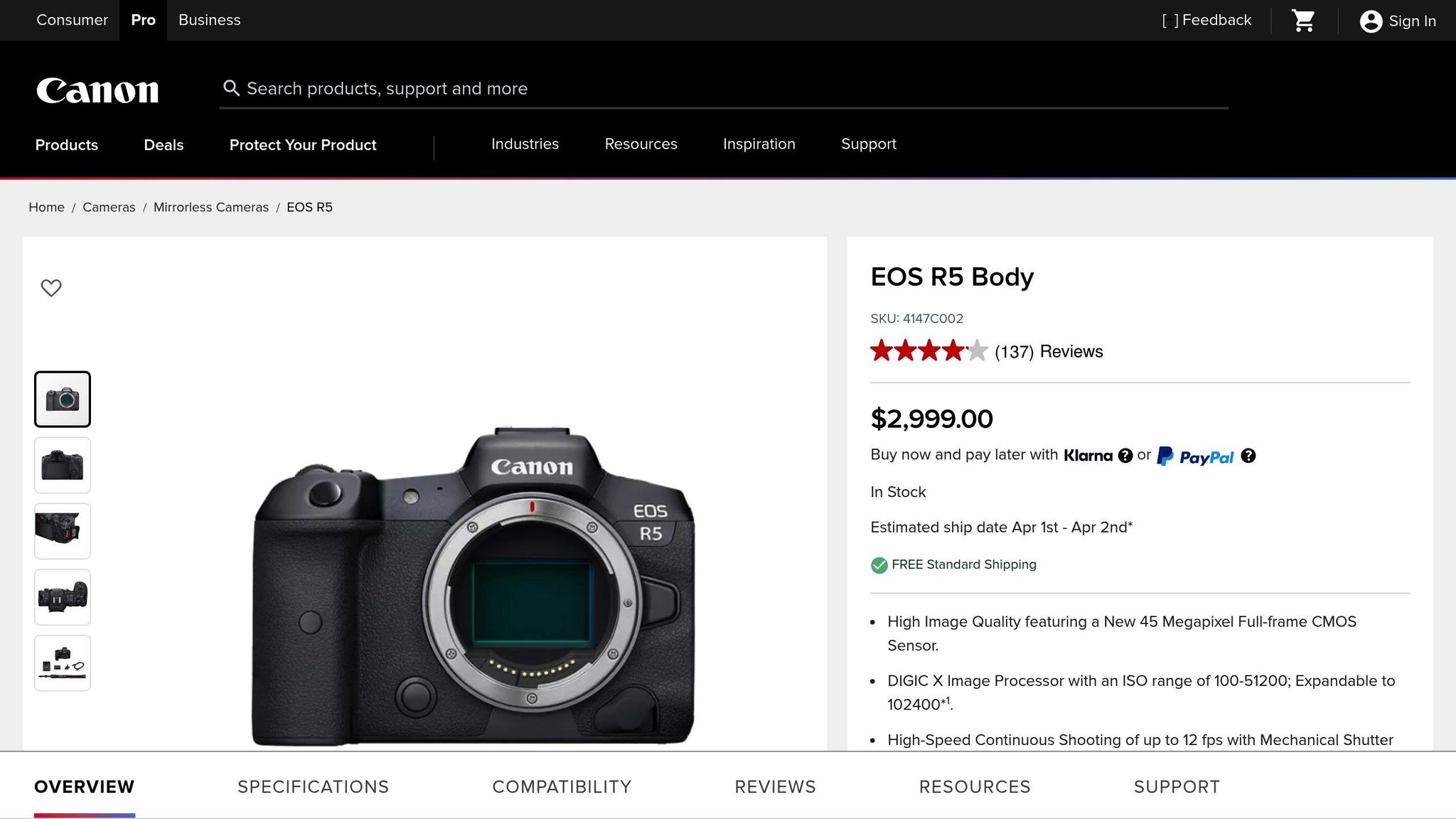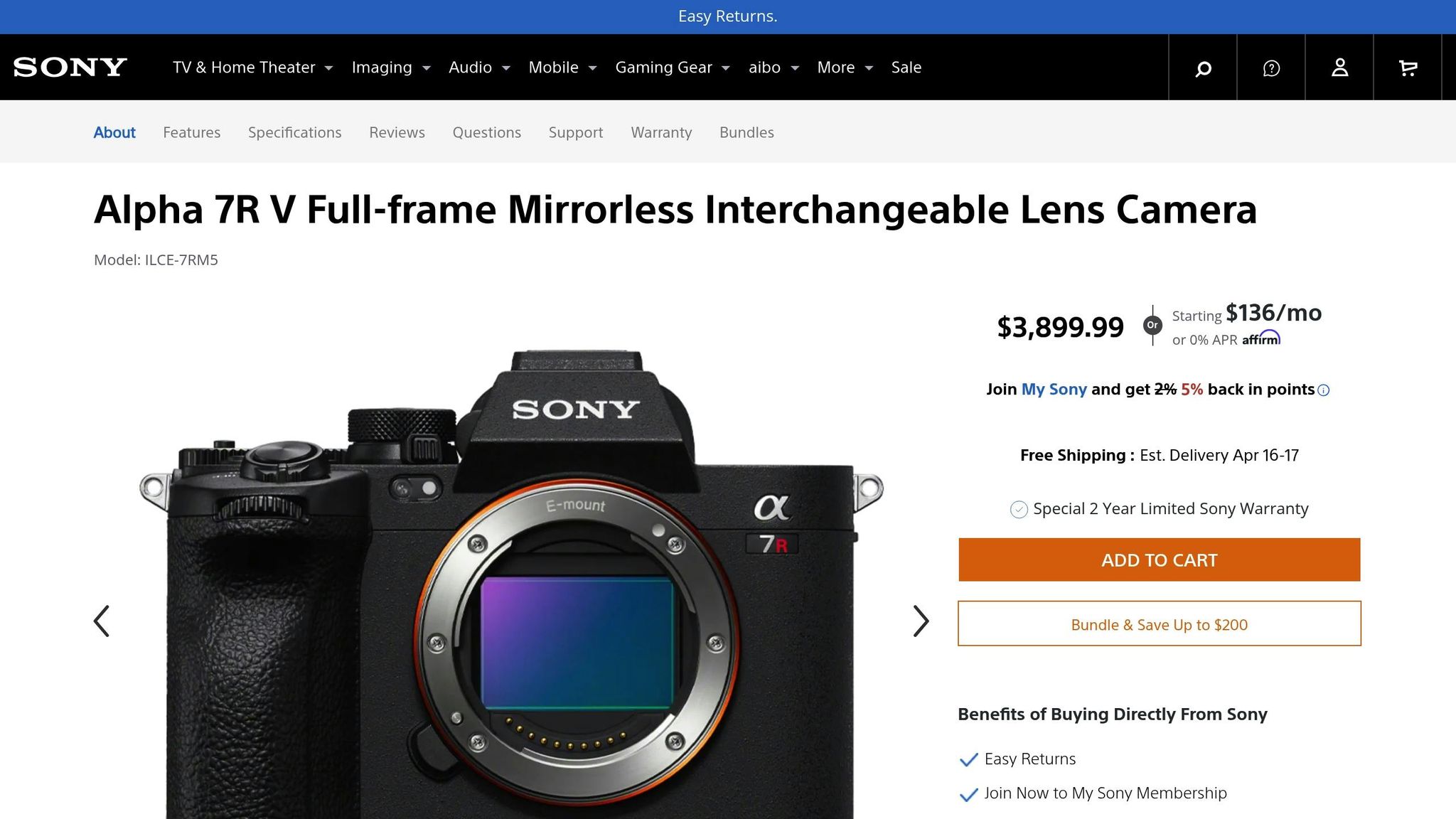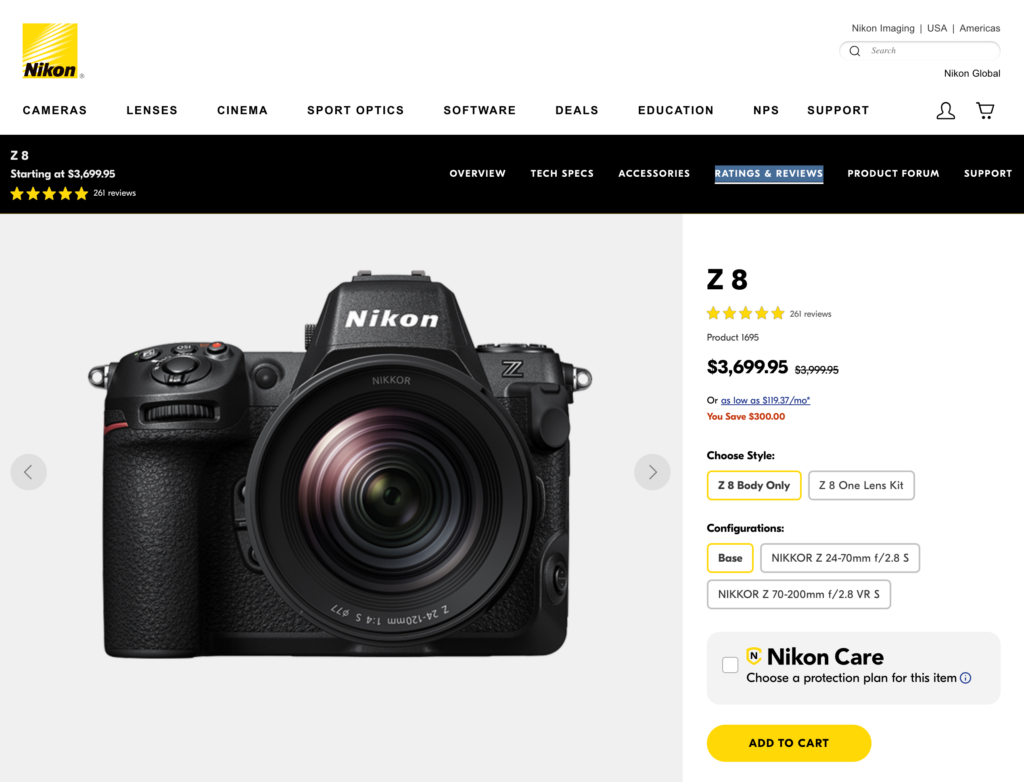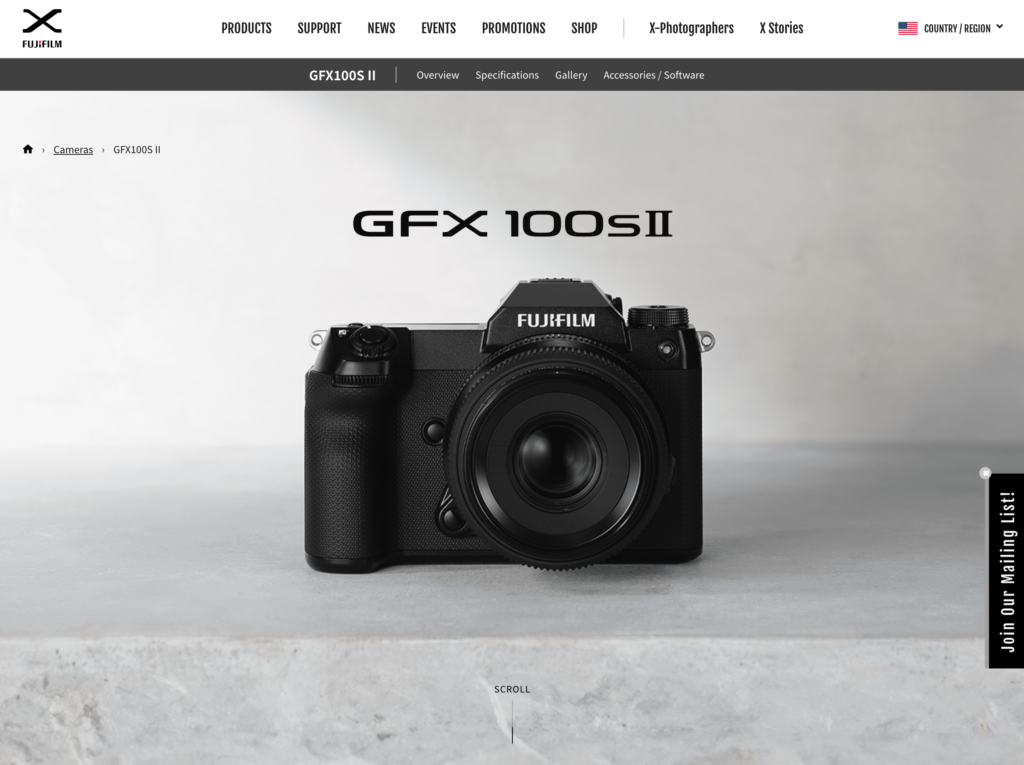Smartphones just don’t cut it for professional headshots. To stand out, you’ll need a full-frame camera, a portrait lens, and the right lighting tools. Here’s a quick breakdown of what you need:
Essential Equipment:
- Camera Body: Full-frame cameras (starting around $2,000) offer better detail and dynamic range.
- Portrait Lenses: 50mm or longer for flattering perspectives.
- Lighting System: Key for controlling shadows and highlights.
- Light Modifiers: Soften and shape light for professional results.
- Tethering Tools: Review shots in real-time with clients.
Best Cameras for Headshots:
- Canon EOS R5 ($2,999): 45MP sensor, advanced autofocus, and natural skin tones.
- Sony Alpha 7R V ($3,899): 61MP sensor with AI-powered autofocus.
- Nikon Z8 ($3,999): 45.7MP stacked sensor with deep-learning autofocus.
- Fujifilm GFX 100S II ($4,999): 102MP medium format sensor for unmatched detail.
Quick Comparison:
| Camera | Resolution | Autofocus System | Price | Ideal For |
|---|---|---|---|---|
| Canon EOS R5 | 45MP | Dual Pixel CMOS AF II | $2,999 | Versatile studio setups |
| Sony Alpha 7R V | 61MP | AI-powered AF | $3,899 | Fast-paced environments |
| Nikon Z8 | 45.7MP | Deep-learning AF | $3,999 | Consistent lighting needs |
| Fujifilm GFX 100SII | 102MP | Hybrid AF (Medium Format) | $4,999 | Controlled studio setups |
Key Takeaway:
For sharp, professional headshots, invest in a high-quality camera and lens. The Canon EOS R5 and Sony Alpha 7R V are great all-rounders, while the Fujifilm GFX 100S II offers unparalleled detail for premium shoots. Pair your camera with proper lighting and modifiers to elevate your results.
Pro Tip: Start with one excellent lens and consider certified pre-owned gear to save money without sacrificing quality.
1. Canon EOS R5

The Canon EOS R5 comes with a 45-megapixel full-frame CMOS sensor designed to capture intricate details. Priced at $2,999.00 for the body, it provides features aimed at professional photographers.
Its advanced autofocus system is a standout for headshot photography. With 1,053 AF zones covering the entire frame, it ensures precise focusing. The Eye, Face, and Head Detection AF keeps your subjects sharp, while the Dual Pixel CMOS AF system maintains continuous focus. Together, these features make it a reliable tool for capturing striking portraits.
| Feature | Specification | Why It Matters for Headshots |
|---|---|---|
| Sensor Resolution | 45 MP | Captures fine facial details |
| ISO Range | 100-51,200 (expandable to 102,400) | Handles different studio lighting conditions |
| Continuous Shooting | Up to 12 fps (mechanical), 20 fps (electronic) | Captures subtle changes in expressions |
| Image Stabilization | Up to 8 stops IBIS | Minimizes blur during handheld shots |
The DIGIC X Image Processor, paired with a 5.76-million-dot OLED viewfinder running at 120 fps, ensures accurate rendering of skin textures and overall composition.
“A fusion of design excellence, processing power, and performance we haven’t seen before. Certainly not in a mirrorless camera.” – Rudy Winston, Canon USA [2]
For top-tier results, pair the EOS R5 with the RF 100mm f/2.8 L Macro IS USM lens. This combination offers ideal facial compression, while the vari-angle touchscreen LCD makes it easy to maintain eye contact with your subject and monitor your frame at the same time.
Built for durability, the camera’s shutter is rated for 500,000 cycles, ensuring it can handle heavy use. The in-body image stabilization compensates for motion, making it perfect for extended handheld sessions.
Canon’s color science ensures natural skin tones straight out of the camera, cutting down on editing time. Plus, the ability to create 400-megapixel in-camera files allows for extensive cropping and composition adjustments without losing detail.
2. Sony Alpha 7R V

The Sony Alpha 7R V stands out as a top choice for professional headshot photography, thanks to its 61.0MP full-frame back-illuminated Exmor R CMOS sensor and AI-powered autofocus system.
Its advanced autofocus system features 693 phase-detection points that cover 79% of the frame. Combined with AI-driven Real-time Recognition, it ensures precise tracking of human subjects, even in tricky shooting conditions.
| Feature | Specification | Why It Matters for Headshots |
|---|---|---|
| Sensor Resolution | 61.0 MP | Captures fine details like skin texture and facial expressions |
| Autofocus Coverage | 693 points, 79% frame coverage | Tracks subjects accurately across most of the frame |
| Image Stabilization | 8.0 stops IBIS | Keeps images sharp, even in low-light settings |
| Continuous Shooting | 10 fps for up to 583 RAW frames | Captures subtle changes in expressions without interruptions |
Dual BIONZ XR processors enhance image processing and allow flexible RAW output options, including lossless compression in multiple resolutions – 60MP (L), 26MP (M), and 15MP (S).
“The autofocus is incredible, the level of customization is next-level, and the battery life is outstanding.” – Gerardo Robayo [3]
The camera’s AI processing fine-tunes autofocus adjustments and refocusing behaviors for consistent results. Its Dynamic Range Optimizer retains details in both highlights and shadows, while the ISO range of 100–32,000 (expandable to 50–102,400) handles various studio lighting setups with ease.
A multi-shot mode combines 16 images into a single 241MP file, offering extensive post-processing flexibility. The 9,440k-dot electronic viewfinder with 100% coverage ensures precise framing for every shot.
Built with weather sealing, the camera performs reliably in studio settings and outdoor shoots alike. The dedicated Photo/Video Mode Switch makes it easy to shift between shooting needs, while dual SD/CFexpress card slots provide flexible storage and instant backup options during client sessions.
Up next, take a look at the Nikon Z8 to compare other professional tools for headshot photography.https://app.seobotai.com/banner/inline/?id=sbb-itb-14ed590
3. Nikon Z8

The Nikon Z8 is a top-tier choice for headshot photography, boasting a 45.7MP stacked CMOS sensor that delivers incredible detail. Its compact design – 30% smaller than the Z9 – makes it ideal for extended studio sessions.
| Feature | Specification | Headshot Photography Benefit |
|---|---|---|
| Sensor | 45.7MP stacked CMOS | Captures fine facial details and skin textures |
| Autofocus Points | 493 points | Ensures precise eye and face tracking |
| ISO Range | 64–25,600 (expandable to 32–102,400) | Handles various studio lighting conditions |
| Shooting Speed | Up to 20 fps RAW | Perfect for capturing subtle expression changes |
| Image Stabilization | 5.5 stops IBIS | Keeps shots sharp, even in tricky conditions |
The camera’s deep-learning autofocus system is designed to lock onto eyes – even if partially obscured – and can focus in extremely low light, down to –9.0 EV. It also features optimized auto white balance and in-camera processing to enhance skin tones and overall sharpness.
Dual card slots (CFexpress Type B/XQD and SecureDigital) provide reliable data storage during client shoots, while professional-grade weather sealing protects the camera from external elements. The electronic shutter offers a wide range of speeds, from 15 minutes to 1/32,000 seconds, and in-camera skin softening tools help reduce post-processing time with controls for hue and brightness.
“If you want the absolute best hybrid camera Nikon has to offer or are a videographer that shoots Nikon, the Nikon Z8 is hands down the best camera for you.” – Zach Nichols [4]
The wide-area autofocus system includes 20 custom options for defining focus areas, giving photographers flexibility to adjust focus for specific headshot compositions. Combined with its deep-learning subject detection, the Z8 ensures consistent focus on facial features, even when the subject moves slightly.
4. Fujifilm GFX 100S II

The Fujifilm GFX 100S II brings medium format photography to the next level with its impressive 102-megapixel sensor, measuring 43.8mm x 32.9mm. This camera delivers outstanding image quality for professional headshots, all while being surprisingly portable at just 2 pounds, including the battery and memory card.
| Feature | Specification | Why It Matters for Headshots |
|---|---|---|
| Sensor Size | 43.8mm x 32.9mm | Captures incredible depth and detail |
| Resolution | 102MP | Perfect for sharp facial detail |
| Image Stabilization | 8.0 stops | Ensures clarity in less-than-ideal lighting |
| LCD Monitor | 3.2-inch tilt-type touch | Makes composing and reviewing shots easier |
| Film Simulations | 20 modes | Offers creative flexibility for tones and colors |
Its advanced stabilization system provides up to 8.0 stops of correction, delivering sharp results even in tricky lighting. The X-Processor 5 efficiently manages large image files while maintaining accurate skin tone reproduction – essential for professional portraits.
At $4,999, the GFX 100S II makes medium format photography more accessible to professionals. Its DSLR-style body improves handling, especially with larger lenses, which is a big plus for long headshot sessions.
“The GFX 100S II is truly a portrait photographer’s dream. Whether shooting in studio or on location, the camera is not only extremely capable but delivers image quality that is impossible not to love.” – Pete Coco [6]
While its autofocus isn’t the fastest compared to some full-frame options, the GFX 100S II makes up for it with exceptional dynamic range and editing flexibility. With 20 film simulation modes, photographers can achieve diverse styles, from vintage chrome to natural, modern looks.
The customizable button layout lets users streamline their workflow, while the 3.2-inch tilt-type touch screen and sub LCD monitor provide quick access to essential settings and image previews.
Its compact design – 30% smaller than earlier medium format models [5] – is ideal for both studio and location shoots. Weighing just 5.6 ounces more than typical full-frame cameras, it offers unmatched medium format quality in a portable package. This sets the stage for our in-depth comparison of top cameras in this category.
Camera Comparison Overview
Here’s a breakdown of how these cameras stack up for professional headshot photography based on their key features:
Table 1. Camera Specifications
| Feature | Canon EOS R5 | Sony A7R V | Nikon Z8 | Fujifilm GFX 100S II |
|---|---|---|---|---|
| Sensor Resolution | 45MP | 61MP | 45.7MP | 102MP |
| Sensor Type | CMOS | BSI-CMOS | Stacked CMOS | Medium Format |
| AF System | Dual Pixel CMOS AF II | AI-powered AF | Hybrid AF | Hybrid AF system |
The Fujifilm GFX 100S II stands out with its massive 102MP resolution, making it ideal for capturing fine details. The Sony A7R V follows with 61MP, while the Canon EOS R5 and Nikon Z8 both offer around 45MP, which is still more than enough for sharp, professional headshots.
Next, let’s look at autofocus performance, which is a critical factor for headshot photography:
Table 2. Autofocus Performance
| Camera | AF Strengths | Ideal Use Case |
|---|---|---|
| Sony A7R V | AI-powered tracking, 399 focus points | Fast-paced studio sessions |
| Nikon Z8 | Stacked sensor with faster readout | Consistent lighting |
| Canon EOS R5 | Dual Pixel CMOS AF II system | Versatile lighting scenarios |
| Fujifilm GFX 100S II | Hybrid AF system | Controlled studio setups |
The Sony A7R V shines in dynamic studio environments with its AI-enhanced autofocus and extensive focus points. The Nikon Z8 benefits from a stacked sensor, offering faster image processing and excellent performance in consistent lighting. The Canon EOS R5 is adaptable to different lighting conditions, while the Fujifilm GFX 100S II thrives in controlled studio environments thanks to its larger sensor.
“Probably the biggest advantage the Nikon Z8 has over the other two cameras is its stacked sensor, giving it improved image quality, faster readout speeds and higher resolution, among other things.” [7]
When it comes to lenses, Canon and Nikon offer a wider range of prime options suited for headshots. Meanwhile, Fujifilm compensates with its medium format sensor, delivering unparalleled detail.
Each of these cameras brings something unique to the table. The Fujifilm GFX 100S II is unbeatable for image quality, while the Sony A7R V combines high resolution with cutting-edge autofocus. On the other hand, the Canon EOS R5 and Nikon Z8 provide well-rounded performance and access to extensive lens ecosystems, making them versatile options for various shooting needs.
This comparison lays the groundwork for choosing the best equipment for your headshot photography needs.
Recommendations
After reviewing the camera comparison, it’s time to gear up your studio to match these top performers. Here’s a breakdown of headshot photography equipment tailored to different budgets and studio needs:
Camera Recommendations by Budget
- Under $1,000: Nikon D7500 – Great for beginners, especially in low-light conditions.
- $1,000–$2,000: Canon EOS R10 – Compact and features modern autofocus, ideal for smaller studios.
- $2,000–$3,000: Sony A7R V – Perfect for high-volume work with advanced autofocus capabilities.
- $4,000+: Fujifilm GFX 100S II – Delivers exceptional detail, suited for premium studios.
Choosing the Right Lens and Lighting
Your lens choice and lighting setup should align with your budget and the size of your studio. For smaller spaces (under 10 feet), a 50mm lens works well. In larger studios, an 85mm or longer lens provides better subject-to-background separation and enhances your camera’s autofocus performance.
Once you select your lens, focus on lighting. Strobe lighting is ideal for controlled studio environments, while speedlights are more versatile and work well in mixed lighting situations. If you’re often on the move, portable flash systems are a great option.
“Most headshot photographers prefer an 85mm focal length or longer. Personally, I use a 50mm lens because I know I will always have enough room when setting up in a tight space (like a conference room or my own studio, which isn’t big).” – Nataliya Lalor, Owner/Photographer of N. Lalor Photography LLC [1]
Additional Tips
Investing in a high-quality lens is a smart move for long-term performance. If you’re just starting out, buying used gear can help you get the most value, especially when choosing a full-frame mirrorless camera with face/eye tracking features.
For studios that rely on stability, the Olympus OM-D E-M10 Mark IV is a solid choice. Its in-body image stabilization ensures sharp images even at slower shutter speeds, which is particularly useful when working with natural light or minimal artificial lighting setups [8].
